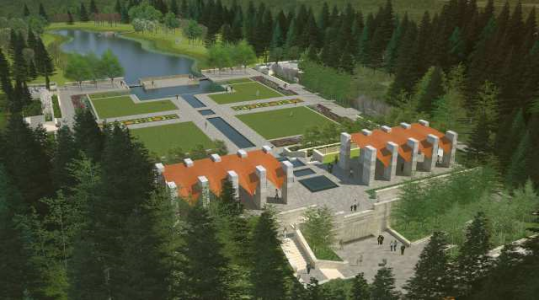Aga Khan drops $25 million gift on University of Alberta Botanic Garden 2017-04-07
university of alberta
North America’s largest — and possibly the world’s coldest — Islamic-inspired garden is to be built in Alberta, a $25-million gift from the Aga Khan that is expected to attract up to 160,000 visitors a year.
Spanning almost 12 acres, the Mughal garden, which was officially unveiled Friday, will become the centrepiece of the sprawling 240-acre University of Alberta Botanic Garden, located about 15 minutes southwest of the city.
Design work on the project began six years ago after the Aga Khan, the hereditary Imam or spiritual leader of the Shia Ismaili Muslims, visited the garden and suggested the idea.
Early stages of construction began in the summer of 2016 and the new garden is scheduled to open in time for the Aga Khan’s diamond jubilee celebrations in July 2018.
The University of Alberta is predicting that the Aga Khan Garden, which will be the size of six Canadian Football League fields, could increase attendance to about 160,000 people from between 60,000 to 70,000 annually.
Speaking from New York earlier this week, Thomas Woltz, the principal and owner of the 45-person landscape architecture firm Nelson Byrd Woltz, the company behind the project, said the garden was “a complicated site with a lot of different inherent odd geometries twisting through a valley with different small hills.”
So, at the behest of the Aga Khan, Woltz spent a year travelling to similar Islamic gardens around the world to undertake extensive research and to study their form and design.
“That trip is what helped us avoid the sense we were making some historical quotation without a deeper understanding of space, form, scale and what the garden would be made of,” he said.
“The challenge here is how do you have a contemporary interpretation of an Islamic garden that has many of the features we discovered in our research without it reading as a reproduction or anything artificial.
“Our job was to bring a coherent narrative that would capture a 21st century vision of the history of the Mughal garden traditions, Islamic architecture and landscape architecture.”
The dominant feature of the garden will be 20 covered, 18-foot high stone columns at the top of the garden designed to provide shade in the summer and offer some protection from the elements for visitors in the winter.
Stairs will lead down to a large central courtyard, known as a chahar bagh, which is divided by walkways into four grassed areas and surrounded by native plants.
- 4039 reads
 Ismaili.NET - Heritage F.I.E.L.D.
Ismaili.NET - Heritage F.I.E.L.D.